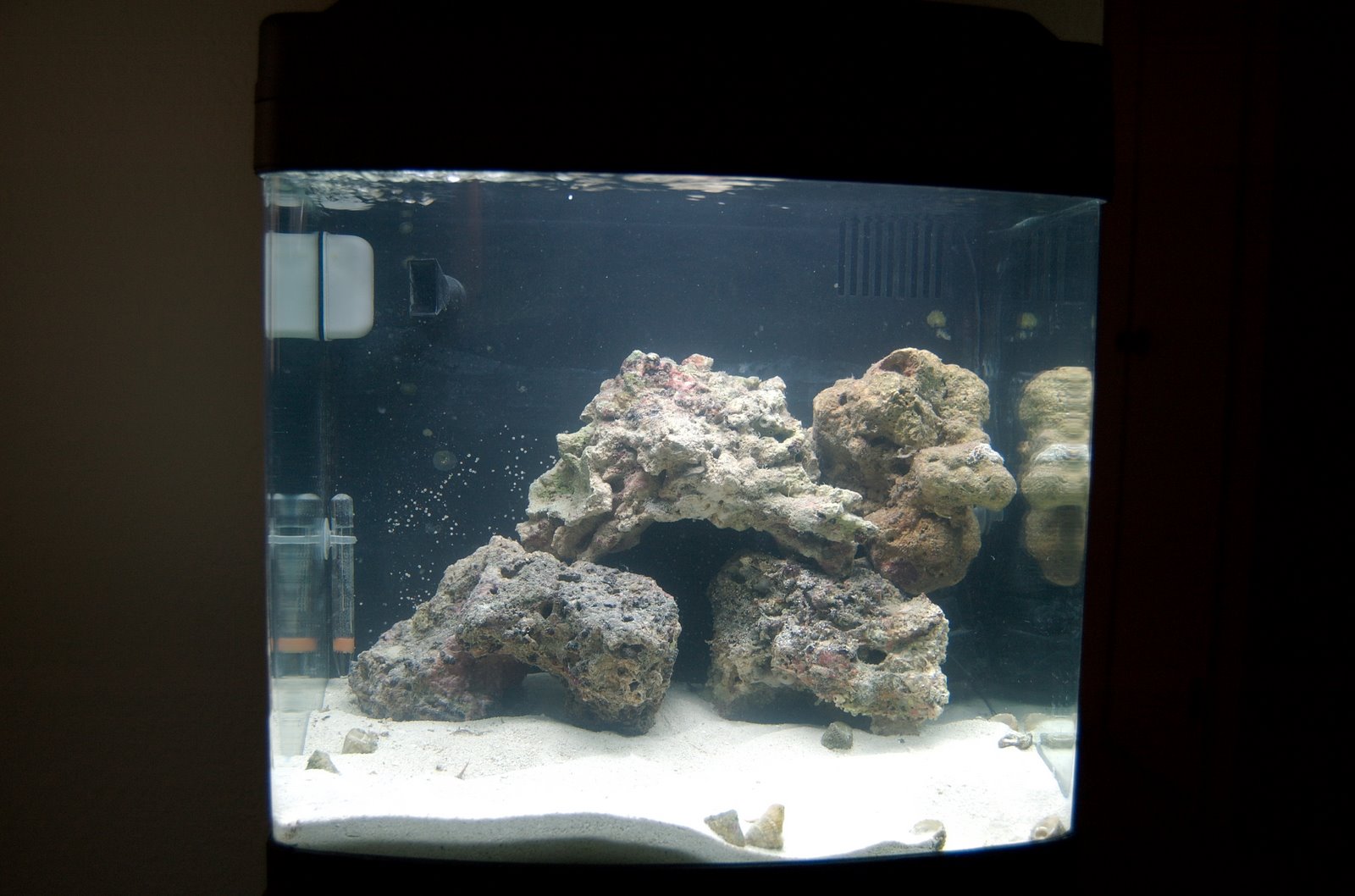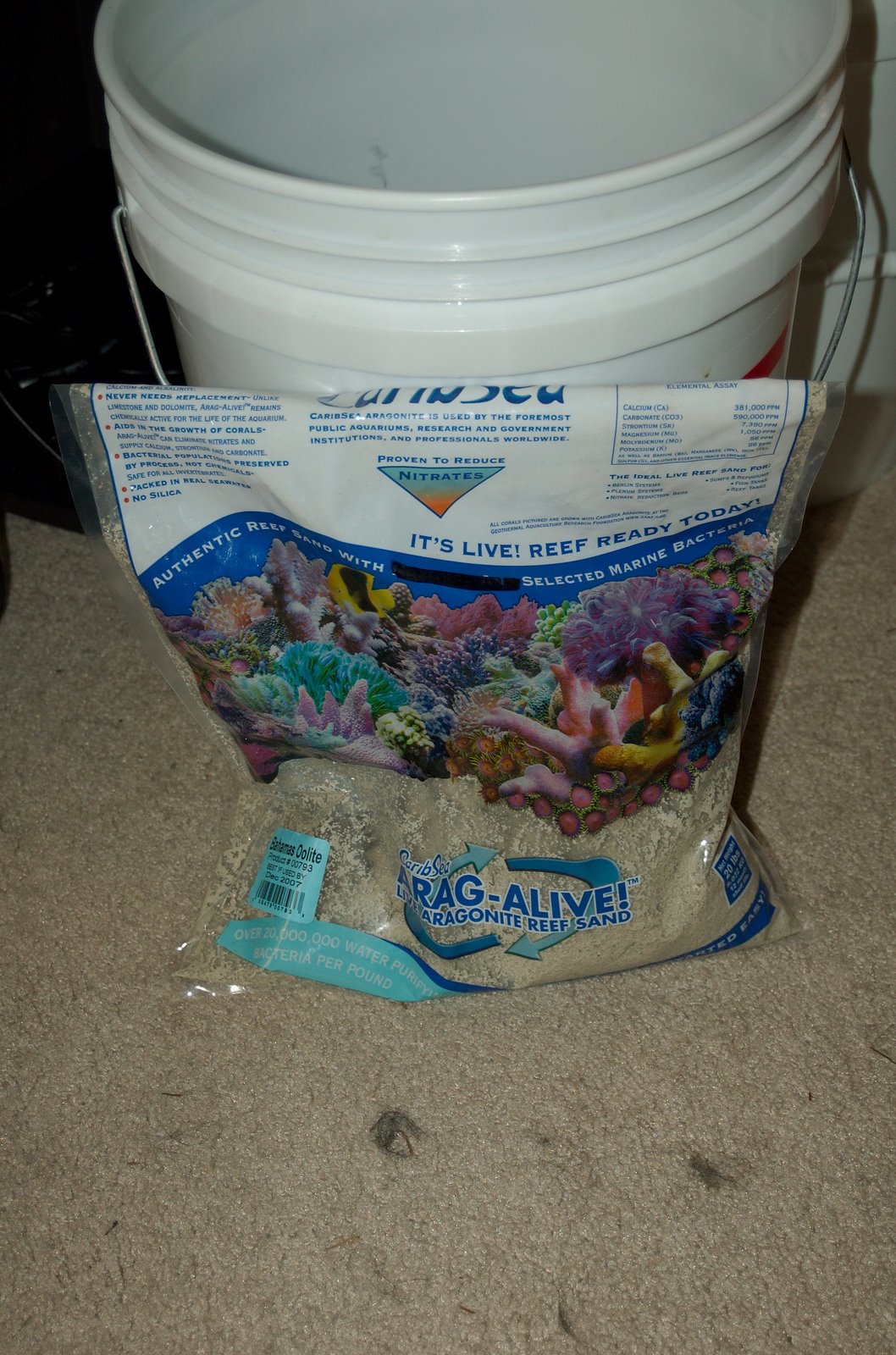Okay, yesterday I swapped out the failed light ballast at Denny’s Pet World so now both lights are working. Also, the tank water has cleared up nicely.
So now we wait. I’ll be taking water samples for the next two weeks to track the nitrogen cycle. Once the tank has cycled completely it will be time to add some animals. I may try mail order on some of them this time around. It’s cheaper and the store fish get shipped to the store anyway.
Educational TidBit…(The nitrogen cycle)
When you first put the tank together and fill it, add salt, then add live rock/sand and/or animals the water goes through a nitrogen cycle. The waste created by the livestock creates ammonia which is toxic. As the ammonia levels rise, bacteria in the live rock/live sand start to grow and consume the ammonia. They turn the ammonia into nitrite which is also toxic. More bacteria grow and convert the nitrite into a more liveable nitrate. The level of ammonia starts to fall as the nitrites rise, then the nitrites fall as the nitrates rise. Eventually the toxic chemicals are extremely low and nitrate remains fairly constant. A healthy ecosystem in your tank will maintain the balance. This process takes a few weeks on average. Once complete you can add livestock. Each time you add any livestock to the tank the cycle happens again but the amount of rise and the time it takes to cycle will be dependent on how much you add at one time. Completely clean sand and rock will not create the ammonia and the only way to start this cycle for the first time is to add a fish. Unfortunately it is highly likely that that fish won’t live through the cycle. This is where live sand and uncured live rock help. They have live bacteria already because they actually came from either an established fish tank (sand), or the ocean (ie: the Fiji Live Rock). Adding uncured live rock/live sand to a tank that already has animals can kill everything in the tank though so you only really do this at the beginning. Later on, you want to add “cured” live rock, which has been filtered for a while to kill/remove most of the bacteria.






